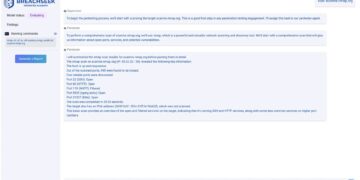Financial analysts play a pivotal role in detecting and tracking illicit funds that fuel criminal activities like terrorism, money laundering, and organized crime. Leveraging Open Source Intelligence (OSINT) techniques offers a powerful toolset for uncovering hidden financial networks and tracing illegal financial activities. Below are key OSINT techniques financial analysts can utilize:
1. Corporate Registry Analysis
- Objective: Identify suspicious businesses or shell companies.
- Tools: Open corporate databases, government registries, and platforms like OpenCorporates or Companies House.
- Usage: Analysts can explore company ownership structures, locate beneficial owners, and discover links between shell companies often used to obscure illicit funds.
2. Blockchain Exploration
- Objective: Trace cryptocurrency transactions.
- Tools: Blockchain explorers like Etherscan, Blockchair, or Chainalysis.
- Usage: Financial analysts can follow transaction chains, identify wallet holders, and map out patterns of transfers associated with money laundering or illegal transactions using cryptocurrencies.
3. Dark Web Monitoring
- Objective: Uncover black-market transactions.
- Tools: Specialized OSINT tools like Dark Web scanners (e.g., DarkOwl), Tor browser.
- Usage: Track illicit marketplaces where stolen financial data or illegal products are sold. Analysts can observe cryptocurrency exchange activities and payment processes to uncover networks related to illicit financial activity.
4. Social Media and Forums Monitoring
- Objective: Identify individuals discussing illicit activities.
- Tools: Advanced search operators, Hunchly, and Maltego.
- Usage: OSINT on social media platforms and forums can expose criminal financial networks. Financial analysts can track down suspects promoting fraudulent financial schemes or discussing money laundering strategies.
5. Transaction Pattern Analysis
- Objective: Detect abnormal financial behaviors.
- Tools: AML transaction monitoring software (e.g., TRM Labs, CipherTrace), pattern recognition algorithms.
- Usage: Analyze transactions for signs of structuring, layering, and integration—key stages in money laundering. Patterns of small, seemingly unrelated transactions can point to a larger laundering scheme.
6. News and Media Intelligence
- Objective: Stay informed about global financial crimes.
- Tools: OSINT news aggregators, Google Alerts, or financial news databases.
- Usage: Analysts should monitor financial crime trends, sanctions, and emerging threats to anticipate shifts in illicit financial flows and adjust investigative strategies accordingly.
7. Domain and Email Intelligence
- Objective: Expose fraudulent websites or phishing schemes.
- Tools: WHOIS databases, DNS lookup tools, and Hunter.io.
- Usage: By investigating domain registrations and associated emails, analysts can link suspicious websites to criminal entities or phishing operations aimed at stealing financial information.
8. Leaked Data Repositories
- Objective: Investigate exposed financial data.
- Tools: HaveIBeenPwned, Pastebin, and other data breach repositories.
- Usage: Analysts can check for compromised financial accounts or identities being sold online and track down the origins of these breaches to combat financial fraud.
9. Public Financial Disclosures and Sanctions Lists
- Objective: Identify individuals or entities involved in financial crimes.
- Tools: OFAC’s Specially Designated Nationals (SDN) list, European Union sanctions lists, and public PEP (Politically Exposed Persons) lists.
- Usage: Investigating sanctions lists helps financial analysts verify whether individuals or companies are involved in suspicious activities linked to illicit funds.
10. Geospatial Intelligence (GEOINT)
- Objective: Track physical movements of illicit actors.
- Tools: Google Earth, Mapillary, OpenStreetMap, and geospatial analysis tools.
- Usage: Analysts can trace the physical locations of entities involved in illicit transactions, tracking warehouses, offices, or locations associated with high-value transfers.










